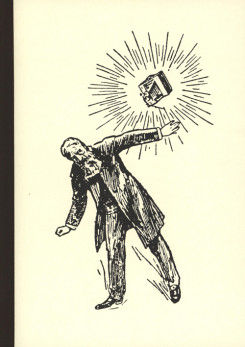Leopold’s Legacy
- zuccaccia
- 8 gen 2021
- Tempo di lettura: 2 min
Aggiornamento: 28 gen 2025

Title: Leopold’s Legacy
Photographer(s): Oliver Leu
Writer(s): Oliver Leu, Matthew G. Stanard, Bambi Ceuppen
Designer(s): Carel Fransen
Narrative costruction: Oliver Leu, Carel Fransen
Publisher(s): The Eriskay Connection, Breda, The Netherland
Year: 2020
Print run:
Language(s): English
Pages: 152
Size: 17 x 24 cm
Binding: Softcover
Edition:
Print: Wilco Art Books, Amersfoort, The Netherland
Nation(s) and year(s) of Protest: Congo/Belgium, 1885-1960
ISBN: 978-94-92051-51-6











I like this book because whit that is possible to introduce a new way to talk about protest, non only manifestations but see a protest from a different side.
The book by artist Oliver Leu Leopold's Legacy questions the work in the Congo of King Leopold of Belgium. The book leads to a reflection on how the King was considered in his homeland and how his figure should be reviewed in view of the abuse of power and atrocities perpetrated in the Congo during the colonial period. The purpose of the book is to raise doubts through images and texts as well as to highlight how the King has been magnified in his homeland, from the placement of statues in the squares to his name in the streets. A book that stimulates a critical reflection, desecrating and subverting the common thought becomes an element of protest.
Leopold’s Legacy is a reflection on both the visible representations of colonialism in present-day Belgium, and the hidden traces of its gruesome past. Oliver Leu (DE), as an artist, presents an eclectic collection of visual research, focusing on various topics from colonial monuments and prestigious architecture to antique postcards and collaged sculptures for alternative monuments. All these remnants of a once glorious past paint a wry story of decades of structural exploitation and genocide, and demonstrate how in Europe our collective perception of these events is gradually changing.
At the Berlin Conference in 1885, King Leopold II of Belgium was proclaimed the founder and sole owner of the Congo Free State, by convincing the colonial nations of Europe to commit to common trade and improving the lives of the native inhabitants. But in reality he extracted a fortune from the territory. Initially by the collection of ivory, but since the invention of the rubber wheel by Dunlop in 1888, mostly by exploiting the Congolese people to harvest and process rubber. His administration of the Congo was characterised by forced labour, torture and murder, causing the deaths of millions of Congolese people. A large part of the monetary gains from this exploitation was spent on public and private construction projects in Belgium that are often still part of our urban space.
With Leopold’s Legacy, Leu paints the portrait of an ambitious ruler with delusions of grandeur, and the influence the exploitation of his private colony still has on his home country today as well as how many of its colonial remnants are still very much present.
Including an introductory text by Professor of History, Matthew G. Stanard, and an extensive essay by Bambi Ceuppens, researcher at the Royal Museum for Central Africa in Tervuren.
Commenti